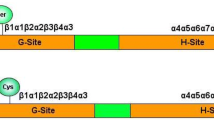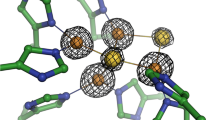Abstract
The Cu/Zn superoxide dismutase (SOD1) catalyzes the dismutation of superoxide radicals produced in the course of biological oxidations. When placed under the control of the rat SOD1 gene promoter and transfected into human HepG2 hepatoma cells, the activity of a chloramphenicol acetyltransferase reporter gene was found to increase three- to four-fold in the presence of heavy metals (cadmium, zinc and copper). Functional analysis of mutant derivatives of the SOD1 gene promoter and the use of a heterologous promoter system confirmed that the induction of the SOD1 gene by metal ions requires a metal-responsive element (MRE) located between positions −273 and −267 (GCGCGCA). It was also shown by gel mobility shift assays that an MRE binding protein is induced by the exposure of the human liver cell line HepG2 to heavy metals. These results suggest that the MRE participates in the induction of the SOD1 gene by heavy metals.
Similar content being viewed by others
Author information
Authors and Affiliations
Additional information
Received: 5 February 1999 / Accepted: 21 May 1999
Rights and permissions
About this article
Cite this article
Yoo, H., Chang, M. & Rho, H. Heavy metal-mediated activation of the rat Cu/Zn superoxide dismutase gene via a metal-responsive element. Mol Gen Genet 262, 310–313 (1999). https://doi.org/10.1007/s004380051088
Issue Date:
DOI: https://doi.org/10.1007/s004380051088




